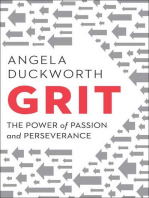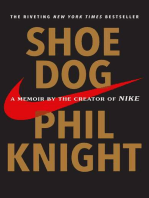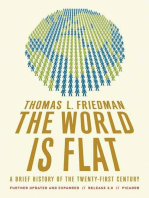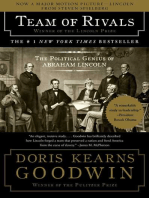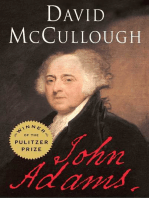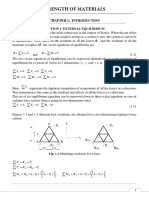0 ratings0% found this document useful (0 votes)
20 viewsUnit-I: Machine Design Defined As
Unit-I: Machine Design Defined As
Uploaded by
Rishi RajputThe document contains a multiple choice test with questions related to machine design concepts. Key topics covered include definitions of machine design, mechanical properties, manufacturing processes like casting, forging, rolling, and theories of failure. Stress concentration factors, endurance limits, fatigue loading, and factors of safety are also addressed. The test aims to assess understanding of fundamental machine design and materials science principles.
Copyright:
© All Rights Reserved
Available Formats
Download as DOCX, PDF, TXT or read online from Scribd
Unit-I: Machine Design Defined As
Unit-I: Machine Design Defined As
Uploaded by
Rishi Rajput0 ratings0% found this document useful (0 votes)
20 views15 pagesThe document contains a multiple choice test with questions related to machine design concepts. Key topics covered include definitions of machine design, mechanical properties, manufacturing processes like casting, forging, rolling, and theories of failure. Stress concentration factors, endurance limits, fatigue loading, and factors of safety are also addressed. The test aims to assess understanding of fundamental machine design and materials science principles.
Original Description:
Original Title
MIQ..1
Copyright
© © All Rights Reserved
Available Formats
DOCX, PDF, TXT or read online from Scribd
Share this document
Did you find this document useful?
Is this content inappropriate?
The document contains a multiple choice test with questions related to machine design concepts. Key topics covered include definitions of machine design, mechanical properties, manufacturing processes like casting, forging, rolling, and theories of failure. Stress concentration factors, endurance limits, fatigue loading, and factors of safety are also addressed. The test aims to assess understanding of fundamental machine design and materials science principles.
Copyright:
© All Rights Reserved
Available Formats
Download as DOCX, PDF, TXT or read online from Scribd
Download as docx, pdf, or txt
0 ratings0% found this document useful (0 votes)
20 views15 pagesUnit-I: Machine Design Defined As
Unit-I: Machine Design Defined As
Uploaded by
Rishi RajputThe document contains a multiple choice test with questions related to machine design concepts. Key topics covered include definitions of machine design, mechanical properties, manufacturing processes like casting, forging, rolling, and theories of failure. Stress concentration factors, endurance limits, fatigue loading, and factors of safety are also addressed. The test aims to assess understanding of fundamental machine design and materials science principles.
Copyright:
© All Rights Reserved
Available Formats
Download as DOCX, PDF, TXT or read online from Scribd
Download as docx, pdf, or txt
You are on page 1of 15
UNIT-I
1. Machine Design defined as
a) New Idea
b) Exiting Idea
c) Idea
d) None
A
2. How many considerations in Machine Design
a) 6
b) 5
c) 4
d) 12
D
3. Unit of Force
a) Newton
b) Kilogram
c) Gram
d) Pascal
A
4. Unit of Energy
a) Joule
b) Newton
c) Kilogram
d) Gram
A
5. How Many Types of Mechanical Properties
a) 2
b) 4
c) 12
d) 13
D
Definition of Creep
6. a) High Temperature
b) Low Temperature
c) Permanent Deformation
d) Deformation
C
7. Define Fatigue
a) Fails at Yield Point Stress
b) Fails at Stress
c) Stress at Deformation
d) Deformation at yield point Stress
A
8. How many Manufacturing Process
a) 7
b) 6
c) 5
d) 4
C
9. Joining Process means
a) Machine Components Joining
b) Assembling
c) Dismantling
d) Assembled Parts
A
10. Machining Process Means
a) Final Shape
b) Starting Shape
c) Joining
d) Dismantling
A
11. Casting Design includes
a) Strength of the Casting
b) Production
c) Economy
d) Safety
A
12. Machine forging is done by
a) Hand Forging
b) Drop Forging
c) Forging Machines
d) Forging
C
Forging Temperature for Mild Steel in degree centigrade
13. a) 900-1300
b) 940-1180
c) 350-500
d) 750-1300
D
14. High Carbon Steel Temperature in forging in degree centigrade
a) 600-950
b) 800-1150
c) 750-1550
d) 940-1180
B
15. Above Recrystallization Temperature is called
a) Hot Working
b) Cold Working
c) Hot and Cold Working
d) Medium Working
A
16. Hot Spinning means
a) Heating the metal to Forging Temperature
b) Forging Temperature
c) Heating the metal
d) Metal Forging
17. Hot Piercing means
a) Manufacture of Diagonal shapes
b) Manufacturing thin rods
c) Manufacture of Seamless Tubes
d) Manufacturing of Shapes
C
18. Below Recrystallization Temperature is called
a) Hot Working
b) Cold Working
c) Hot and Cold Working
d) Manufacturing Process
B
19. Cold Rolling Means
a) Bars of all shapes
b) Cold Rolling
c) Hot Rolling
d) Hot and cold Rolling
A
20. Cold Extrusion is similar to
a) Cold Working
b) Hot working
c) Cold and Hot Extrusion
d) Hot Extrusion
D
21. Rotary Swaging method to reduce
a) Dia. of round bars Ans.A
b) Cone Shapes
c) Vertical Shapes
d) Horizontal Shapes
22. Cold Drawing generally employed in
a) Bars
b) Rods
c) Bars, Rods, Wires
d) Wires
C
23. Interchangeability is normally employed in
a) Batch Production
b) Machines
c) Mechanisms
d) Mass Production
D
24. Cold Bending applications in is
a) Bars ,wires only
b) Bars, Wires, Tubes and structural Shapes
c) Tubes only
d) Wires only
B
25. Preferred numbers are derived from
a) Geometric Progression
b) Basic Series
c) Geometric Series
d) Series
C
26. The Four Series are Called as
a) Geometric Progression
b) Basic Series
c) Geometric Series
d) Series Ans.B
27. The Other series are Called as
a) Geometric Progression
b) Basic Series
c) Geometric Series
d) Derived Series
D
28. Factor of Safety defined as
a) Geometric Progression
b) Maximum Stress to Working Stress
c) Working Stress to Design Stress
d) Series
B
29. Working Stress is also known as
a) Allowable Stress
b) Max. Stress
c) Stress induced
d) Yield Stress
A
30. In case of Ductile Materials, FOS defined as
a) Working Stress to Design Stress
b) Yield Point Stress to Design Stress
c) Stress to Strain
d) Design Stress to Yield Point Stress
B
31. Hooks Law holds up to
a) Yield Point
b) Elastic Point
c) Plastic Limit
d) Breaking Point Ans.B
32. The ratio of Linear Stress to Linear Strain
a) Modulus of Elasticity
b) Modulus of rigidity
c) Poisons Ratio
d) Bulk Modulus
A
33. Factor of Safety for Steel is
a) 2
b) 4
c) 6
d) 8
B
34. The Energy Stored in a body when strained with in elastic limit is known as
a) Resilience
b) Proof Resilience
c) Strain Energy
d) Impact Energy
C
35. Maximum Principal Stress theory is also known as
a) Rankines theory
b) Saint Theory
c) Failure theory
d) Trescas theory
A
36. Maximum Principal Strain theory is also known as
a) Rankines theory
b) Saint Theory
c) Failure theory
d) Trescas theory Ans.B
37. Theories of Failures based upon
a) Stress Properties
b) Elastic Properties
c) Material Properties
d) Mechanical Properties
D
38. Maximum Shear Stress Theory is also called as
a) Guest Theory
b) Rankine theory
c) Hencky theory
d) Haigh Theory
A
39. Maximum Strain Energy Theory is also called as
a) Guest Theory
b) Rankine theory
c) Hencky theory
d) Haigh Theory
D
40. Maximum Distortion Energy theory is also called as
a) Guest Theory
b) Rankine theory
c) Hencky theory
d) Haigh Theory Ans.C
UNIT-II
1. Irregularity in the Stress distribution is known as
a) Stress Concentration
b) Stress Concentration Factor
c) Theoretical Stress
d) Maximum Stress Theory
A
2. Form Stress Concentration Factor is the ratio of
a) Nominal Stress to Maximum Stress
b) Maximum Stress to Failure Theory
c) Maximum stress to Nominal Stress
d) Stress Concentration to strain Factor
C
3. Notch Sensitivity is applied for
a) Behavior of Metals
b) Theoretical Effect
c) Stress Concentration
d) Maximum stress to Nominal Stress
A
4. Fatigue Stress Concentration Factor is the ratio of
a) Endurance limit without Stress Concentration to Endurance limit with Stress Concentration
b) Maximum stress to Nominal Stress
c) Stress Concentration to strain Factor
d) Endurance limit with Stress Concentration to Endurance limit without Stress Concentration
A
5. Notch Sensitivity is defined as
a) Theoretical Effect
b) Working stress to nominal stress
c) Nominal Effect
d) Degree to which the theoretical effect of Stress concentration
D
6. Good Man line method is used for
a) Ultimate Strength
b) Ultimate Tensile Strength
c) Ultimate compressive Strength
d) Ultimate drag Strength
A
7. Goldman line and Soderberg line is used to design
a) Steel Components
b) Ductile Materials
c) Machine Parts
d) Brass Components
C
8. Good Man line method shows
a) Safe Stress line
b) Failure Stress line and Safe Stress line
c) Strain line
d) Stress and Stain lines
B
9. Gerber Method related to which curve
a) Parabola Curve
b) Circle Closed Curve
c) Simple Closed Curve
d) Triangle Curve
A
10. The Surface finish factor for a mirror polished material is
a) 0.45
b) 0.65
c) 0.85
d) 1
D
11. Endurance limit is used as
a) Bending
b) Forward Bending
c) Reverse Bending
d) Middle Bending
C
12. Endurance limit is known as
a) Endurance Stress
b) Fatigue limit
c) Fatigue Stress
d) Fatigue load
B
13. The Value of Size factor is taken as
a) 7.657 mm
b) 7.658 mm
c) 7.659 mm
d) 7.660 mm
A
14. The Value of size factor taken as if nominal size is more than 7.657 and less than 50mm
a) The Size factor is 0.84
b) The Size factor is 0.85
c) The Size factor is 0.86
d) The Size factor is 0.87
B
15. When the nominal diameter of the specimen is more than 50 mm then the value size factor is
a) 0.78
b) 0.77
c) 0.76
d) 0.75
D
16. Stress Ratio, for completely reversed Stresses, R=
a) -1
b) -2
c) -3
d) -4 Ans.A
17. Stress Ratio, for completely repeted Stresses, R=
a) -3
b) -2
c) -1
d) 0
D
18. Stress Ratio(R)is defined as
a) Maximum Stress to Minimum Stress
b) Minimum Stress to Maximum Stress
c) Maximum Stress to Average Minimum Stress
d) Average Stress to Minimum Stress
A
19. Stress concentration occurs in
a) Holes, key ways, Splines, Surface roughness
b) Fillets, Notches, Holes, key ways, Splines, Surface roughness
c) Fillets, Notches, Holes, key ways
d) Fillets, Notches, Holes, Splines, Surface roughness
B
20. Surface finish factor for Piston Rod(K) taken as
a) 0.6
b) 0.7
c) 0.8
d) 0.9
D
21. Factor of Safety taken as for Piston Rod is
a) 2
b) 2.1
c) 2.3
d) 2.4 Ans.A
22. FOS for fatigue loading is the ratio of
a) Endurance limit to working or Design Stress
b) Endurance limit to Tensile Stress
c) Endurance limit to Compressive Stress
d) Endurance limit to Stress
A
23. How many Methods to reduce Stress Concentration of Stress flow lines
a) 1
b) 2
c) 3
d) 4
D
24. How many Methods to reduce Stress Concentration of in cylindrical members with shoulders
a) 1
b) 2
c) 3
d) 4
C
25. How many Methods to reduce Stress Concentration Cylindrical members with holes
a) 1
b) 2
c) 3
d) 4
B
26. How many Methods to reduce Stress Concentration of Cylindrical members
a) 1
b) 2
c) 3
d) 4 Ans.C
27. Almost 80% of failures and accidents are due to
a) Stress Phenomenon
b) Strain Phenomenon
c) Fatigue Phenomenon
d) Stress Ratio Phenomenon
C
28. A fatigue failure begins with
a) Small Crack
b) Crack
c) Small and high Crack
d) High crack
A
29. Failure Stresses in Ductile material is
a) Yield Strength
b) Ultimate Strength
c) Tensile Strength
d) Compressive Strength
A
30. Failure Stresses in Brittle material is
a) Yield Strength
b) Ultimate Strength
c) Tensile Strength
d) Compressive Strength
B
31. The safe value of limiting stress in a component is known as
a) Allowable stress
b) Permissible stress
c) Design Stress
d) All of the above Ans.D
32. Tie rods are load carrying members which carry
a) Tensile loads
b) Compressive loads
c) Transverse loads
d) Torsion Loads
A
33. Steel bars in reinforced cement concrete beam are located at
a) Top
b) Bottom
c) Centre
d) Uniformly distributed loads
B
34. S-N curve drawn in which graph paper
a) Graph Paper
b) Log Paper
c) Log graph Paper
d) Log-Log graph Paper
D
35. Gerber Parabola fits fits in
a) Test Data
b) Given Data of manufacturing data
c) Failure points of Test Data
d) Failure points
C
36. Soderberg Graph drawn of
a) Stress Vs Mean Stress
b) Stress Amplitude Vs Mean Stress
c) Tensile Stress Amplitude Vs Mean Stress
d) Stress Amplitude Vs Mean Stress Ans.B
37. Notch Sensitivity Charts drawned between
a) Notch Sensitivity factor Vs Notch Radius
b) Stress Sensitivity factor Vs Notch Radius
c) Tensile Sensitivity factor Vs Notch Radius
d) Compressive Sensitivity factor Vs Notch Radius
A
38. Surface Finish factor drawned and consider which stregth
a) Endurance Strength
b) Compressive Strength
c) Tensile Strength
d) Fatigue Strength
C
39. The function of Washer is to
a) Provide Cushioning Effect
b) Provide Bearing Area
c) Absorb Shocks
d) Provide Smooth Bearing Surface
B
40. At the Neutral Axis of a beam ,The transverse Shear Stress is
a) Zero
b) Maximum
c) Minimum
d) Infinity Ans.B
UNIT-III
1. A Rivet is Specified by
a) Shank Diameter
b) Type of Head
c) Length Of the Rivet
d) None of the Above
A
2. The Diameter of Rivet holeis usually --------------the nominal diameter of the rivet
a) Equal to
b) Less than
c) More than
d) None of the above
C
3. The distance between the centers of the adjacent rivets in the same row is called
a) Pitch
b) Row Pitch
c) Margin
d) Diagonal Pitch
A
4. The distance between from the edge of the plate to the Centre of the nearest rivet is called
a) Pitch
b) Row Pitch
c) Margin
d) Diagonal Pitch
B
5. Lower Portion of the Shank is called as
a) Pitch
b) Shank
c) Body
d) Tail
D
6. The Rivets are used to make permanent fastening between
a) Shanks
b) Tail and Shank
c) Structural work
d) Body
C
7. Material for Rivets is
a) Steel, Brass, Aluminum, copper, Low Carbon Steel, Nickel Steel
b) Aluminum, copper, Low Carbon Steel, Nickel Steel
c) Brass, Aluminum, copper, Low Carbon Steel
d) None of the above
A
8. Rivet being heated up to
a) 1000 degree centigrade
b) 100 degree centigrade
c) 650 degree centigrade
d) 850 degree centigrade
C
9. How many types of Riveted joints
a) 4
b) 3
c) 2
d) 0
C
10. Back pitch is
a) Longitudinal Distance
b) Perpendicular Distance
c) Centre distance
d) Length of the shank
B
11. A Lap Joint is always in ---------Shear
a) Single
b) Double
c) Trible
d) Four Times
A
12. Number of Rivets is the Ratio of
a) Total Number of Rivets to Number of Rivets
b) Number of Rivets in one row to Total Number of Rivets
c) Total Number of Rivets to Number of Rivets in one row
d) None of the above
C
13. Welding is extensively used in
a) Filler material
b) Fabrication
c) Casting
d) None of the above
B
14. Welding requires a
a)
b)
c)
d) Highly Skilled Labor and Supervision
D
15. The inspection of welding work is more difficult than
a) Specimen Work
b) Tail Work
c) Shank Work
d) Riveting Work
D
16. Thermit welding is mixture of Iron oxide and
a) Brass
b) Copper
c) Aluminum
d) None of the above Ans.C
17. A flux is being used to remove---------- in gas welding
a) Slag
b) Metal Particles
c) Waste from metals
d) Blow Holes
A
18. How many Basic Welded Symbols
a) 25
b) 24
c) 23
d) 22
D
19. How many Supplementary Welded Symbols
a) 8
b) 9
c) 10
d) None of the above
A
20. Since the weld is weaker than plate due to slag and blow holes, which may be taken as
a) 9% of the Plate thickness
b) 10% of the Plate thickness
c) 11% of the Plate thickness
d) 12% of the Plate thickness
B
*******The End*******
You might also like
- The Subtle Art of Not Giving a F*ck: A Counterintuitive Approach to Living a Good LifeFrom EverandThe Subtle Art of Not Giving a F*ck: A Counterintuitive Approach to Living a Good LifeRating: 4 out of 5 stars4/5 (5891)
- The Gifts of Imperfection: Let Go of Who You Think You're Supposed to Be and Embrace Who You AreFrom EverandThe Gifts of Imperfection: Let Go of Who You Think You're Supposed to Be and Embrace Who You AreRating: 4 out of 5 stars4/5 (1103)
- Never Split the Difference: Negotiating As If Your Life Depended On ItFrom EverandNever Split the Difference: Negotiating As If Your Life Depended On ItRating: 4.5 out of 5 stars4.5/5 (870)
- Grit: The Power of Passion and PerseveranceFrom EverandGrit: The Power of Passion and PerseveranceRating: 4 out of 5 stars4/5 (597)
- Hidden Figures: The American Dream and the Untold Story of the Black Women Mathematicians Who Helped Win the Space RaceFrom EverandHidden Figures: The American Dream and the Untold Story of the Black Women Mathematicians Who Helped Win the Space RaceRating: 4 out of 5 stars4/5 (912)
- Shoe Dog: A Memoir by the Creator of NikeFrom EverandShoe Dog: A Memoir by the Creator of NikeRating: 4.5 out of 5 stars4.5/5 (543)
- The Hard Thing About Hard Things: Building a Business When There Are No Easy AnswersFrom EverandThe Hard Thing About Hard Things: Building a Business When There Are No Easy AnswersRating: 4.5 out of 5 stars4.5/5 (352)
- Elon Musk: Tesla, SpaceX, and the Quest for a Fantastic FutureFrom EverandElon Musk: Tesla, SpaceX, and the Quest for a Fantastic FutureRating: 4.5 out of 5 stars4.5/5 (474)
- Her Body and Other Parties: StoriesFrom EverandHer Body and Other Parties: StoriesRating: 4 out of 5 stars4/5 (830)
- The Sympathizer: A Novel (Pulitzer Prize for Fiction)From EverandThe Sympathizer: A Novel (Pulitzer Prize for Fiction)Rating: 4.5 out of 5 stars4.5/5 (122)
- The Little Book of Hygge: Danish Secrets to Happy LivingFrom EverandThe Little Book of Hygge: Danish Secrets to Happy LivingRating: 3.5 out of 5 stars3.5/5 (414)
- The Emperor of All Maladies: A Biography of CancerFrom EverandThe Emperor of All Maladies: A Biography of CancerRating: 4.5 out of 5 stars4.5/5 (272)
- The Yellow House: A Memoir (2019 National Book Award Winner)From EverandThe Yellow House: A Memoir (2019 National Book Award Winner)Rating: 4 out of 5 stars4/5 (99)
- The World Is Flat 3.0: A Brief History of the Twenty-first CenturyFrom EverandThe World Is Flat 3.0: A Brief History of the Twenty-first CenturyRating: 3.5 out of 5 stars3.5/5 (2270)
- Devil in the Grove: Thurgood Marshall, the Groveland Boys, and the Dawn of a New AmericaFrom EverandDevil in the Grove: Thurgood Marshall, the Groveland Boys, and the Dawn of a New AmericaRating: 4.5 out of 5 stars4.5/5 (269)
- Team of Rivals: The Political Genius of Abraham LincolnFrom EverandTeam of Rivals: The Political Genius of Abraham LincolnRating: 4.5 out of 5 stars4.5/5 (235)
- A Heartbreaking Work Of Staggering Genius: A Memoir Based on a True StoryFrom EverandA Heartbreaking Work Of Staggering Genius: A Memoir Based on a True StoryRating: 3.5 out of 5 stars3.5/5 (232)
- Cbydp & AbyipDocument17 pagesCbydp & AbyipJanine PigaoNo ratings yet
- On Fire: The (Burning) Case for a Green New DealFrom EverandOn Fire: The (Burning) Case for a Green New DealRating: 4 out of 5 stars4/5 (74)
- The Unwinding: An Inner History of the New AmericaFrom EverandThe Unwinding: An Inner History of the New AmericaRating: 4 out of 5 stars4/5 (45)
- World Geo Notes English 46Document4 pagesWorld Geo Notes English 46Arun SinghNo ratings yet
- m2001 Finals CheatsheetDocument2 pagesm2001 Finals CheatsheetGerlyn SunNo ratings yet
- Strength of MaterialsDocument101 pagesStrength of MaterialsLucksy Marcus PalloNo ratings yet
- Science Journalism in The Arab World: The Quest For Ilm' and Truth 1st Edition Abdullah Alhuntushi Full Chapter Instant DownloadDocument44 pagesScience Journalism in The Arab World: The Quest For Ilm' and Truth 1st Edition Abdullah Alhuntushi Full Chapter Instant Downloadstybenntibi100% (2)
- Nonlinear Fiber Optics: Fourth EditionDocument16 pagesNonlinear Fiber Optics: Fourth EditionLeonard NsahNo ratings yet
- Book Review - ISA AlthusserDocument9 pagesBook Review - ISA AlthusserljblambolotoNo ratings yet
- A) Circle of Competence WorksheetDocument2 pagesA) Circle of Competence WorksheetPeter Smith100% (1)
- A Taxonomic Deep and Surface Structure Analysis of 'The Lover and His Lass'Document28 pagesA Taxonomic Deep and Surface Structure Analysis of 'The Lover and His Lass'Alex DoiNo ratings yet
- SWMS Power FloatDocument10 pagesSWMS Power FloatSam LimNo ratings yet
- Group 2: Leading Large-Scale ChangeDocument5 pagesGroup 2: Leading Large-Scale ChangeRio AlbaricoNo ratings yet
- Rosewell, MidlothianDocument1 pageRosewell, MidlothianAnonymous MDlEgaQcNo ratings yet
- English Q4 WEEK 6Document64 pagesEnglish Q4 WEEK 6Jeng Tayag Almine100% (1)
- Introduzione P80 - P80white Service Handbook - BDocument10 pagesIntroduzione P80 - P80white Service Handbook - BRoberto FalconeNo ratings yet
- DC Motor Speed Control Using Arduino in ProteusDocument5 pagesDC Motor Speed Control Using Arduino in ProteusRamshaNo ratings yet
- V2 Quotation-FICDocument4 pagesV2 Quotation-FICSameeha Ali (Sam)No ratings yet
- Compiler Construction: Assignment # 02Document5 pagesCompiler Construction: Assignment # 02shehbaz khanNo ratings yet
- Principles of Accounting, Volume 2: Managerial Accounting: Senior Contributing AuthorsDocument4 pagesPrinciples of Accounting, Volume 2: Managerial Accounting: Senior Contributing AuthorsMichelleOgatisNo ratings yet
- CheesingDocument5 pagesCheesingfranklynx2020No ratings yet
- Esfp TDocument10 pagesEsfp TPhuong Ta MaiNo ratings yet
- 2015 Scig10q2Document86 pages2015 Scig10q2Nomer Pacilan100% (1)
- Centraloffice: Republic of The PhilippinesDocument8 pagesCentraloffice: Republic of The PhilippinesChesterMercadoNo ratings yet
- 17369563Document454 pages17369563Studio Jack100% (1)
- Konsentrasi ZPT AtonikDocument10 pagesKonsentrasi ZPT AtonikPutra AndriansyahNo ratings yet
- ORAL COMMUNICATION Q2 Lesson 10Document40 pagesORAL COMMUNICATION Q2 Lesson 10Isay SeptemberNo ratings yet
- StudyingDocument2 pagesStudyingBiboNo ratings yet
- Thesis Statement On The Importance of Early Childhood EducationDocument4 pagesThesis Statement On The Importance of Early Childhood Educationfjcz1j5g100% (1)
- Reach and ICAS Framework MathematicsDocument9 pagesReach and ICAS Framework MathematicsAnushka YadavNo ratings yet
- Ag Group: Unless Otherwise Specified: JSL 03-10-04Document1 pageAg Group: Unless Otherwise Specified: JSL 03-10-04Anonymous IQD4PqB876No ratings yet
- To Serve. To Excel. To Give Back.: Environmental Social Governance 2020-2021Document32 pagesTo Serve. To Excel. To Give Back.: Environmental Social Governance 2020-2021Vikas MaheshwariNo ratings yet






